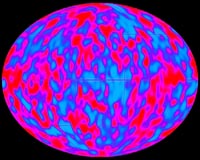 |
Pasadena CA (SPX) Nov 25, 2009 NASA mission managers are assessing options for future operations of the venerable QuikScat satellite following the age-related failure of a mechanism that spins the scatterometer antenna. This spinning antenna had been providing near-real-time ocean- surface wind speed and direction data over 90 percent of the global ocean every day. In recent months, the QuikScat project team has been monitoring a pattern of increasing friction in the bearings that allow the antenna to spin, leading to increased resistance and strain on the motor that turns QuikScat's rotating antenna. This degradation was fully expected, as the spin mechanism was designed to last about 5 years. After experiencing further difficulties over the weekend, the antenna stopped spinning. The QuikScat spacecraft and scatterometer instrument themselves remain in otherwise good health. Should engineers be unable to restart the antenna, QuikScat will be unable to continue its primary science mission, as the antenna spin is necessary to estimate wind speed and direction and form the wide data swath necessary to obtain nearly global sampling. Over the coming days, NASA managers will review contingency plans for restarting the antenna and assess options for using the mission in its present degraded state to advance Earth system science in the event the antenna cannot be restarted. For example, degraded scatterometer measurements from QuikScat can still be useful for cross-calibrating the mission's climate data record with measurements from other scatterometers, including the operational EUMETSAT ASCAT instrument, India's recently launched Oceansat-2 and a planned Chinese scatterometer. Specific operational forecasting applications such as polar ice measurements and limited hurricane observations may also be supportable. By any measure of success, the 10-year-old QuikScat mission is a unique national resource that has achieved and far surpassed its science objectives. Designed for a two-year lifetime, QuikScat has been used around the globe by the world's operational meteorological agencies to improve weather forecasts and identify the location, size and strength of hurricanes and other storms in the open ocean. The mission has also provided critical information for monitoring, modeling, forecasting and researching our atmosphere, ocean and climate. Share This Article With Planet Earth
Related Links QuikScat Space Technology News - Applications and Research
 COBE Satellite Marks 20th Anniversary
COBE Satellite Marks 20th AnniversaryGreenbelt MD (SPX) Nov 18, 2009 NASA's Cosmic Background Explorer (COBE) satellite rocketed into Earth orbit on Nov. 18, 1989, and quickly revolutionized our understanding of the early cosmos. Developed and built at Goddard Space Flight Center in Greenbelt, Md., COBE precisely measured and mapped the oldest light in the universe - the cosmic microwave background. COBE showed that the radiation's spectrum agrees exa ... read more |
|
| The content herein, unless otherwise known to be public domain, are Copyright 1995-2009 - SpaceDaily. AFP and UPI Wire Stories are copyright Agence France-Presse and United Press International. ESA Portal Reports are copyright European Space Agency. All NASA sourced material is public domain. Additional copyrights may apply in whole or part to other bona fide parties. Advertising does not imply endorsement,agreement or approval of any opinions, statements or information provided by SpaceDaily on any Web page published or hosted by SpaceDaily. Privacy Statement |